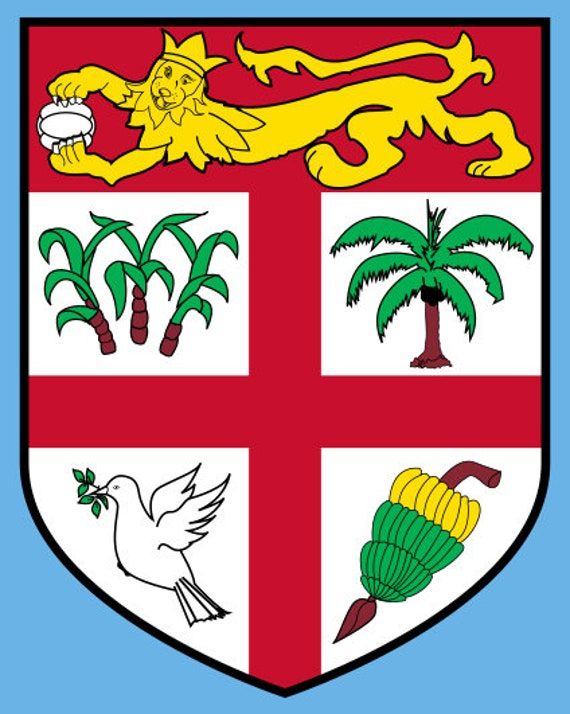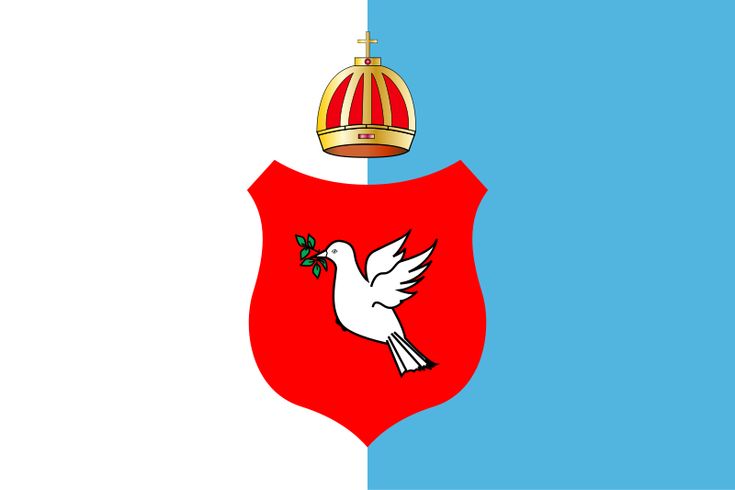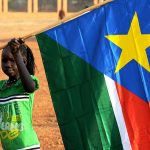The flag of Fiji is more than just a piece of cloth fluttering in the wind—it’s a powerful symbol of the country’s history, culture, and identity. With its distinctive design, it reflects Fiji’s colonial past while also embracing its modern independence.
In this article, we’ll take a closer look at the elements of the flag of Fiji, its historical significance, and what it represents for the Fijian people today.
The Design of the Flag of Fiji
The flag of Fiji is unique and easily recognizable, thanks to its combination of British colonial influences and traditional Fijian symbols. The flag consists of a light blue field, with the Union Jack in the top left corner and a coat of arms in the bottom right. The light blue color represents the Pacific Ocean, which surrounds the island nation, while the Union Jack reflects Fiji’s history as a British colony.
The coat of arms is a central feature of the flag, showcasing various elements that represent Fiji’s agricultural and cultural heritage. The shield includes symbols of Fiji’s primary industries: sugar, coconut, and bananas. The coat of arms also features a cross, which is a nod to the country’s Christian faith, which was introduced during the colonial period. Surrounding the shield are two figures: a native Fijian and an Indian laborer, representing the two major ethnic groups in the country.

Historical Context of the Flag of Fiji
Fiji’s flag has a long and complex history, one that is tied to the nation’s colonial past and its journey to independence. Fiji became a British colony in 1874, and for much of its colonial history, the country’s flag was based on the Union Jack, reflecting Britain’s dominance in the Pacific region. The flag of Fiji was officially adopted in 1908, with the Union Jack remaining a prominent feature of the design.
The flag was a symbol of Fiji’s subjugation under British rule, but it also became a symbol of unity for the diverse groups that made up the Fijian population. The country was home to both indigenous Fijians and a large population of Indian indentured laborers, who were brought to the islands by the British to work on sugar plantations. The flag of Fiji thus became a symbol of both the colonial relationship and the multi-ethnic society that developed under British rule.

Fiji’s Path to Independence
Fiji gained independence from Britain on October 10, 1970, and the flag of Fiji remained unchanged after the country became a sovereign state. The decision to retain the flag was a reflection of the country’s desire to maintain continuity with its colonial past while also asserting its new identity as an independent nation. The Union Jack remained on the flag as a symbol of Fiji’s historical ties to Britain, while the coat of arms was a representation of the country’s diverse heritage.
However, the flag has been a subject of debate in Fiji’s post-independence history. In 2013, Fiji’s Prime Minister, Frank Bainimarama, proposed changing the flag as part of his broader efforts to reform the country’s political system and promote national unity. Bainimarama argued that the Union Jack on the flag was a reminder of Fiji’s colonial past and that a new flag would better reflect the country’s independence and modern identity. Despite these calls for change, the flag of Fiji remains in use today, with many Fijians seeing it as a symbol of both their history and their ongoing journey as a nation.
The Symbolism of the Flag of Fiji
The flag of Fiji is rich in symbolism, with each element representing a different aspect of the country’s identity. The Union Jack in the top left corner is a reminder of Fiji’s colonial past, but it also signifies the country’s historical connection to Britain and the Commonwealth. The light blue field symbolizes the Pacific Ocean, which is central to Fiji’s geography and identity as a Pacific island nation.
The coat of arms, located in the bottom right corner, is a powerful representation of Fiji’s agricultural and cultural heritage. The shield includes images of sugarcane, coconut palms, and bananas—three of the country’s most important crops. These symbols reflect Fiji’s economic dependence on agriculture, particularly the sugar industry, which has played a significant role in the country’s development.
The two figures flanking the shield—one a native Fijian and the other an Indian laborer—represent the country’s diverse ethnic makeup. Indigenous Fijians make up the majority of the population, but the Indian community, which arrived in Fiji during the colonial period as indentured laborers, is also an integral part of the country’s society. The figures on the flag of Fiji symbolize the unity between these two groups, who have lived together in Fiji for over a century.
The Flag of Fiji Today
Today, the flag of Fiji is a symbol of national pride for many Fijians. It represents the country’s colonial past but also its progress and growth as an independent nation. Despite debates about changing the flag, it remains a point of pride for those who see it as a symbol of Fiji’s resilience and unity. The flag is flown at government buildings, schools, and public events, and it is a common sight during national celebrations such as Fiji Day, which commemorates the country’s independence.
The flag of Fiji is also a symbol of the country’s continued engagement with the international community. As a member of the Commonwealth, Fiji’s flag serves as a reminder of its historical ties to Britain and the broader Commonwealth family. However, it also reflects Fiji’s modern identity as a Pacific island nation that is active in regional and global affairs.

Conclusion: The Flag of Fiji as a National Symbol
The flag of Fiji is more than just a piece of cloth—it is a symbol of the country’s history, culture, and identity. From its colonial roots to its modern-day significance, the flag reflects Fiji’s journey as a nation. While debates about changing the flag continue, many Fijians continue to view it as a symbol of their unity and pride. The flag of Fiji stands as a reminder of the country’s past, its present, and its future as an independent nation in the Pacific.
You can check out Fiji on our Least Visited Countries Tour, as well as our bespoke trips to the country.





